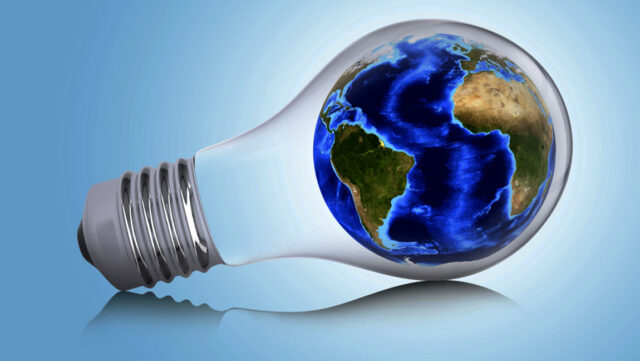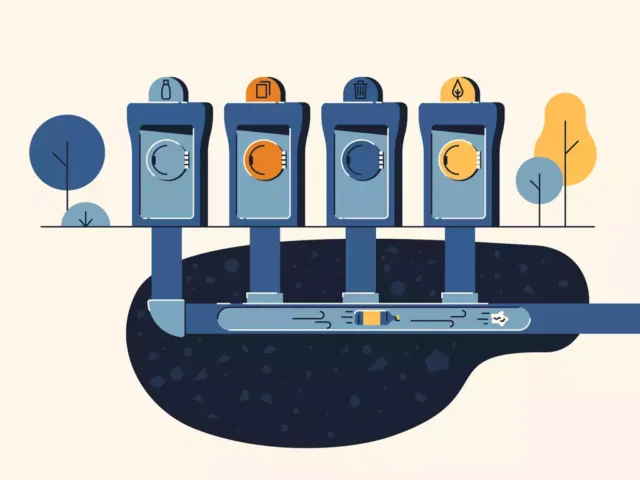
Innovation and invention have long been driving forces in shaping the world we live in. From the light bulb to the internet, inventors have created groundbreaking technologies that have transformed our lives in unimaginable ways. However, in recent years, there has been a growing trend of inventors who are using their talents not just to make life easier or more enjoyable, but to make a positive social impact. In this blog post, we’ll explore how inventors are making a difference in the world through their creations.
Environmental Issues and the Role of Inventors in Creating Solutions

The environment is one of the most pressing issues facing our world today. Climate change, pollution, and the depletion of natural resources are all problems that we must address to ensure a sustainable future. Inventors are at the forefront of creating solutions to these challenges.
One such inventor is Boyan Slat, who founded The Ocean Cleanup, an organization dedicated to removing plastic from the world’s oceans. Slat’s invention is a passive collection system that uses ocean currents to gather plastic debris. The system has been successfully deployed in the Great Pacific Garbage Patch, and Slat’s organization is now working to expand the system to other areas of the ocean.
Another inventor working to address environmental issues is Dan Watson, who created the SafetyNet, a fishing net that reduces bycatch and helps protect marine life. By using lights and other visual cues, the SafetyNet helps fishermen target specific species while avoiding others, reducing the number of accidental catches. These innovations are just a few examples of how inventors are using their talents to create sustainable solutions for the future of our planet.
Of course, inventing social change is not always easy. Many inventors face significant challenges when trying to bring their ideas to life, including a lack of funding, limited resources, and a lack of expertise in certain areas. This is where organizations like InventHelp can make a real difference.
Addressing Social Justice Issues through Innovation and Invention
In addition to environmental issues, inventors are also tackling social justice issues. Pranav Mistry, an inventor and computer scientist, created SixthSense, a wearable device that allows users to interact with the digital world in a more natural and intuitive way. Mistry’s invention has the potential to help people with disabilities access technology more easily, making it an important tool for social justice.
Similarly, Manu Prakash, a physicist, and inventor, created the Foldscope, a low-cost microscope that can be used to diagnose diseases in developing countries. By making medical technology more accessible, Prakash’s invention is helping to reduce healthcare disparities and improve health outcomes in some of the world’s most underserved communities.
The Impact of Microfinance and Small Business Loans on Economic Development

Access to financial resources is a major challenge facing many entrepreneurs, especially those in developing countries. Muhammad Yunus, an economist, and inventor, founded Grameen Bank, a microfinance institution that provides small loans to entrepreneurs in developing countries. Yunus’s invention has helped to lift millions of people out of poverty by giving them the resources they need to start their own businesses and become financially self-sufficient.
The Importance of Accessible Technology for People with Disabilities
For people with disabilities, technology can be a lifeline to the world around them. Cathy Ngo, an inventor, and entrepreneur created Key2Enable, a platform that helps people with disabilities access technology jobs. By providing training and resources, Ngo’s invention is helping to bridge the digital divide and create more economic opportunities for people with disabilities.
Inventions that Improve Access to Healthcare in Underserved Communities
Access to healthcare is a basic human right, but it’s a right that is often denied to people living in underserved communities. Inventors are working to change that. For example, the nonprofit organization We Care Solar has created a solar-powered suitcase that can be used to provide electricity and medical equipment in remote areas without reliable access to power. The suitcase includes medical lighting, a fetal monitor, and other essential equipment that can be used to provide better care for women during childbirth and other medical procedures.
The Use of Wearable Technology for Social Change

Wearable technology is another area where inventors are making a difference in the world. For example, the Guardian Locket is a wearable device that can be used to protect women from sexual assault. The device emits a loud alarm when activated, which can alert bystanders and deter attackers.
Similarly, the Embrace watch is a wearable device that can monitor the vital signs of premature babies. The device alerts medical professionals if there are any changes in the baby’s condition, allowing for faster intervention and better outcomes.
Creating Sustainable Solutions for Clean Energy Through Innovation
Clean energy is a critical component of a sustainable future. Inventors are developing new and innovative ways to harness the power of renewable energy sources. One such inventor is Shawn Frayne, who created the Windbelt, a device that uses vibrations to generate electricity. The Windbelt is small, lightweight, and affordable, making it an ideal solution for providing clean energy in remote areas.
Another inventor working in the field of clean energy is Lisa Dyson, who created a technology that uses microbes to convert carbon dioxide into food. The technology has the potential to provide a sustainable food source while also reducing greenhouse gas emissions.
Addressing Global Poverty
Inventors are also playing an important role in addressing global poverty. For example, the Hippo Water Roller is a device that allows people to transport large amounts of water more easily. The device can be rolled like a wheel, reducing the physical strain of carrying heavy containers of water.
Another invention that is helping to address poverty is the Wonderbag, a slow cooker that uses insulation to retain heat, allowing food to cook without the need for electricity or fuel. The Wonderbag is an affordable and sustainable solution that has the potential to reduce energy costs and improve food security in developing countries.
Using Technology to Improve Education and Access to Learning

Education is a critical tool for social and economic development, but many people around the world lack access to quality education. Inventors are using technology to help bridge this gap. For example, the One Laptop per Child program provides low-cost laptops to children in developing countries, allowing them to access educational resources and participate in online learning.
Another example is the Duolingo app, which provides free language education to people around the world. By using technology to make education more accessible, inventors are helping to create a more equitable and just world.
Humanitarian Aid and Disaster Relief
In the face of natural disasters and humanitarian crises, innovative solutions are more crucial than ever. Inventors and organizations have developed groundbreaking technologies to aid in these challenging situations. For example, portable water purification devices can provide clean drinking water in areas where water sources are contaminated. Collapsible shelters offer quick and efficient housing solutions for displaced individuals. Emergency communication tools, such as satellite phones and portable charging stations, ensure that affected people can reach out for help. To learn more details on how these inventions are making a difference, various case studies and field reports provide insightful information.
Food Security

Addressing global food challenges requires inventive approaches. Innovations in low-cost refrigeration technologies have made it easier to store perishable items, reducing food waste. Vertical farming methods are revolutionizing agriculture by allowing for high-yield crops in smaller spaces. Biotechnological advancements in crop improvement are also playing a role in creating more resilient and nutritious food sources. These inventions not only secure a stable food supply but also contribute to sustainability.
Access to Clean Energy in Rural Areas
Energy access is a significant challenge in rural and off-grid communities. Inventors are tackling this issue with affordable and sustainable solutions. Solar-powered appliances and mini-grids offer a renewable source of energy, reducing reliance on fossil fuels. Efficient cookstoves are another innovation, providing a cleaner and more sustainable way to cook food and heat homes. These inventions are not just about energy; they’re about improving the quality of life in these communities. Check this additional info for more details: several organizations are actively deploying these technologies in rural areas, making a tangible impact.
Innovations in Waste Management

Waste management is a growing concern, especially with the increasing amounts of waste generated globally. Inventive solutions in this sector include waste-to-energy technologies that convert waste materials into usable forms of energy. Additionally, sustainable packaging materials are reducing the environmental footprint of waste disposal. These innovations are crucial steps toward a more sustainable and cleaner planet.
Disability Mobility Solutions
Mobility is a fundamental aspect of life that many take for granted. For individuals with disabilities, inventors have created a range of assistive technologies to enhance mobility and independence. Exoskeletons provide a framework that assists with walking and lifting. Smart canes offer navigation assistance through sensors and vibrations. Accessible transportation options, such as modified vehicles and public transit solutions, are also available to make commuting easier for those with mobility challenges.
Reducing Waste and Improving Sustainability Through Innovative Products and Packaging
Finally, inventors are also working to reduce waste and improve sustainability through innovative products and packaging. For example, the Ecovative Mushroom Materials company has created a sustainable alternative to plastic packaging. The company uses mushroom-based materials to create packaging that is biodegradable and compostable.
Similarly, the Lifestraw is a portable water filter that allows people to drink clean water from any source. The Lifestraw is affordable and easy to use, making it an ideal solution for providing clean water in areas without reliable access to clean water sources.
In conclusion, inventors are making a real difference in the world by using their talents and skills to address some of the most pressing social issues of our time. From environmental issues to social justice issues to economic development issues, these inventors are proving that innovation can be a powerful tool for positive social change. By supporting inventors and investing in innovation, we can create a more sustainable, equitable, and just world for all.









